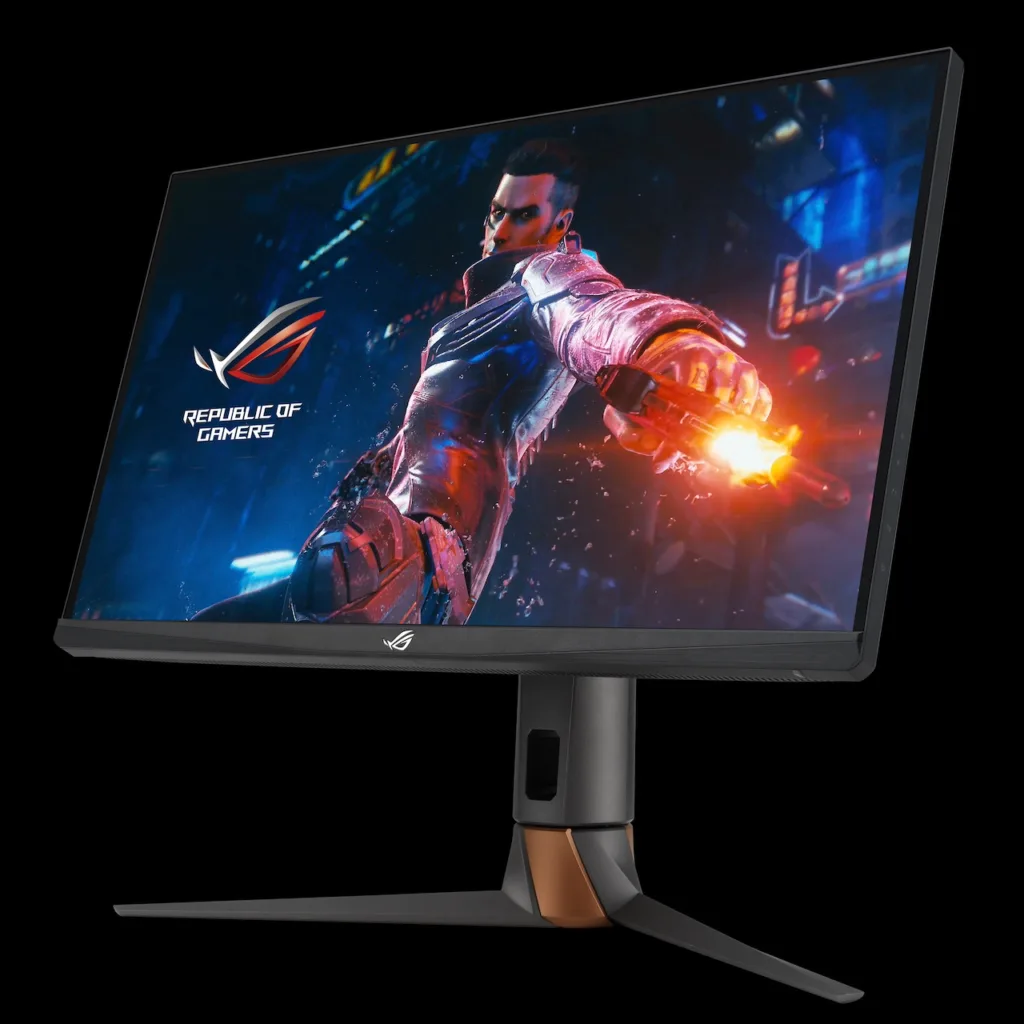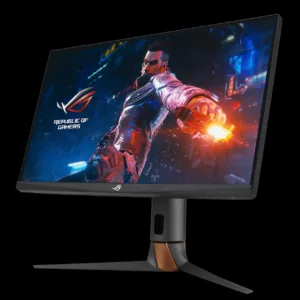Nvidia is, at this point, a juggernaut with unprecedented clout. At CES 2024 you could have been overwhelmed by the company’s presence in AI, where it continues to push its agenda hard, but you didn’t get to forget that the company actually got its start making graphics hardware for gaming subsystems.

First, let’s start with the most significant announcement: G-Sync Pulsar is an advanced technology unveiled by Nvidia in Las Vegas. This technology is the next evolution of variable refresh rate (VRR) and offers several key advancements over previous version:
- Stutter-Free Experience and Motion Clarity: G-Sync Pulsar enhances the gaming experience by delivering both a stutter-free experience and improved motion clarity. It does this by utilizing a novel algorithm that dynamically adjusts strobing patterns to varying render rates.
- Variable Frequency Strobing: A standout feature of G-Sync Pulsar is its variable frequency strobing. This technology significantly boosts effective motion clarity, potentially exceeding 1000Hz. It achieves this by modulating overdrive based on screen location and refresh rate, ensuring clarity and blur reduction across a spectrum of speeds and across the entire screen.
- Combining Adaptive Overdrive and Pulse Modulation: G-Sync Pulsar integrates two pivotal elements – Adaptive Overdrive and Pulse Modulation. Adaptive Overdrive dynamically adjusts pixel transition rates to reduce motion blur and ghosting, while Pulse Modulation controls the pulse’s brightness and duration to maintain visual comfort and eliminate flicker.
- Eliminating Display Motion Blur: G-Sync Pulsar addresses the challenge of display motion blur caused by slow LCD transitions and the persistence of images on the retina. This is tackled by combining VRR timing with precise timing for effective advanced strobing.
- Innovative Engineering: This technology represents a radical rethinking of display technology, requiring new panel technology and fundamental reengineering at both hardware and software levels. It transcends previous challenges associated with VRR and strobing backlight techniques.
- Transformative Gaming Experience: G-Sync Pulsar offers a gaming experience where each frame is delivered with both stutter-free smoothness and motion clarity effectively quadrupling its baseline refresh rate. This results in an immersive and uninterrupted visual journey, especially beneficial in fast-paced games.
- Simplifying User Experience: With G-Sync Pulsar, users no longer need to choose between different monitor settings for VRR or strobing technologies. It provides a superior and convenient visual experience tailored for all gaming genres, from competitive to immersive titles.
Secondly, twenty-four new models of G-Synch gaming monitors, displays, and TVs were announced at CES 2024. Highlights include the Alienware AW3225QF, a 240Hz 4K OLED gaming monitor, the Philips Evnia 49M2C8900, an ultrawide 240Hz OLED gaming monitor, and LG’s new 144Hz OLED and wireless TV lineup, ranging from 48 to 97 inches. Nvidia has extended G-SYNC technology to its cloud gaming service, GeForce Now. This integration aims to improve the visual fidelity of game streaming to G-Sync compatible displays, minimizing stutter and latency, and aiming to making streaming games to your TV as close to local gaming as possible, at least that is the theory, but the marketing has us sold.
| Manufacturer | Model | Size (Inches) | Panel Type | Resolution | Refresh Rate |
|---|---|---|---|---|---|
| Alienware | AW3225QF | 32 | OLED | 3840×2160 (4K) | 240Hz |
| Asus | ROG Swift PG27 series | 27 | IPS | 2560×1440 (QHD) | 360Hz |
| Asus | PG49WCD | 49 | OLED | 5140×1440 (DQHD) | 144Hz |
| AOC | 16G3 | 16 | IPS | 1920×1080 (FHD) | 144Hz |
| AOC | 24G4 | 24 | IPS | 1920×1080 (FHD) | 165Hz |
| AOC | 27G4 | 27 | IPS | 1920×1080 (FHD) | 165Hz |
| AOC | PD49 | 49 | OLED | 5120×1440 (DQHD) | 240Hz |
| AOC | Q27G2SD | 27 | IPS | 2560×1440 (QHD) | 180Hz |
| Dough | ES07E2D | 27 | OLED | 2560×1440 (QHD) | 240Hz |
| IO Data | GCU271HXA | 27 | IPS | 3840×2160 (4K) | 160Hz |
| LG | 2024 4K M4 / G4 (97 inches) | 97 | OLED | 3840×2160 (4K) | 120Hz |
| LG | 2024 4K M4 / G4 (83-55 inches) | 83, 77, 65, 55 | OLED | 3840×2160 (4K) | 144Hz |
| LG | 2024 4K C4 series | 83, 77, 65, 55, 48, 42 | OLED | 3840×2160 (4K) | 144Hz |
| LG | 2024 4K CS series | 65, 55 | OLED | 3840×2160 (4K) | 120Hz |
| LG | 2024 4K B4 series | 77, 65, 55, 48 | OLED | 3840×2160 (4K) | 120Hz |
| LG | 24G560F | 24 | IPS | 1920×1080 (FHD) | 180Hz |
| LG | 27G560F | 27 | IPS | 1920×1080 (FHD) | 180Hz |
| LG | 27GR75QB | 27 | IPS | 2560×1440 (QHD) | 144Hz |
| LG | 32GP75A | 32 | IPS | 2560×1440 (QHD) | 165Hz |
| Philips | 25M2N3200 | 25 | IPS | 1920×1080 (FHD) | 180Hz |
| Philips | 27M1N5500P | 27 | IPS | 2560×1440 (QHD) | 240Hz |
| Philips | 49M2C8900 | 49 | OLED | 5120×1440 (DQHD) | 240Hz |
| Thermaltake | 27FTQB | 27 | IPS | 2560×1440 (QHD) | 165Hz |
| Viewsonic | XG272-2K-OLED | 27 | OLED | 2560×1440 (QHD) | 240Hz |
Nvidia touts its close relationship with manufacturers to ensure proper testing and compatibility with G-Synch standards. G-Sync Pulsar. Judging by the general swirl of interest around streaming games, 2024 may be the year when we start to see more uptake of online gaming services and greater consumer acceptance, particularly if they believe that technologies like G-Synch Pulsar are addressing some of the key concerns with performance.

